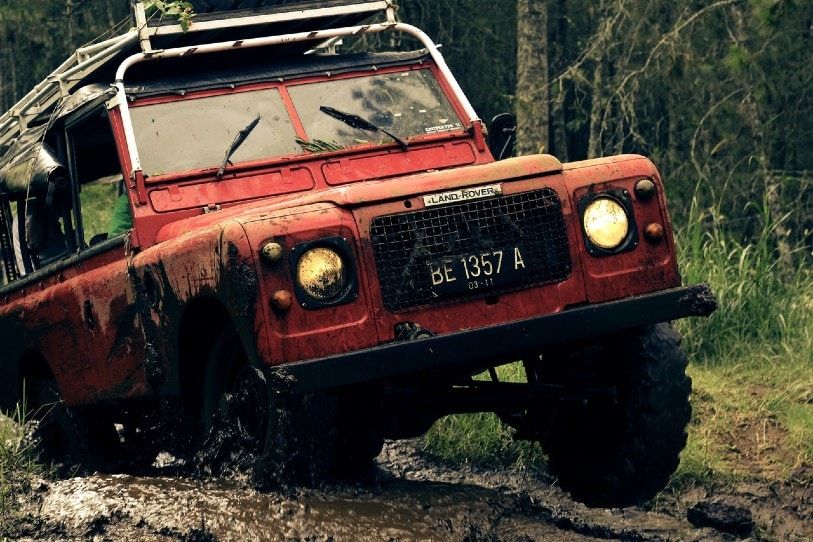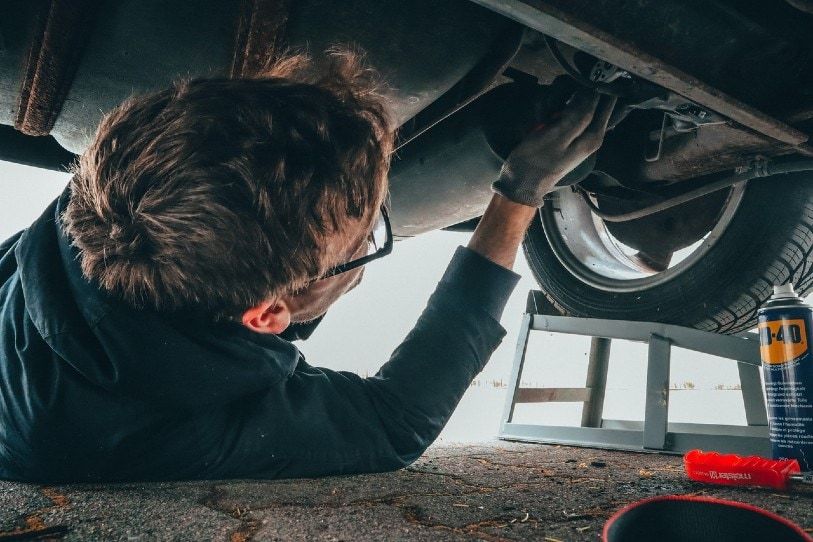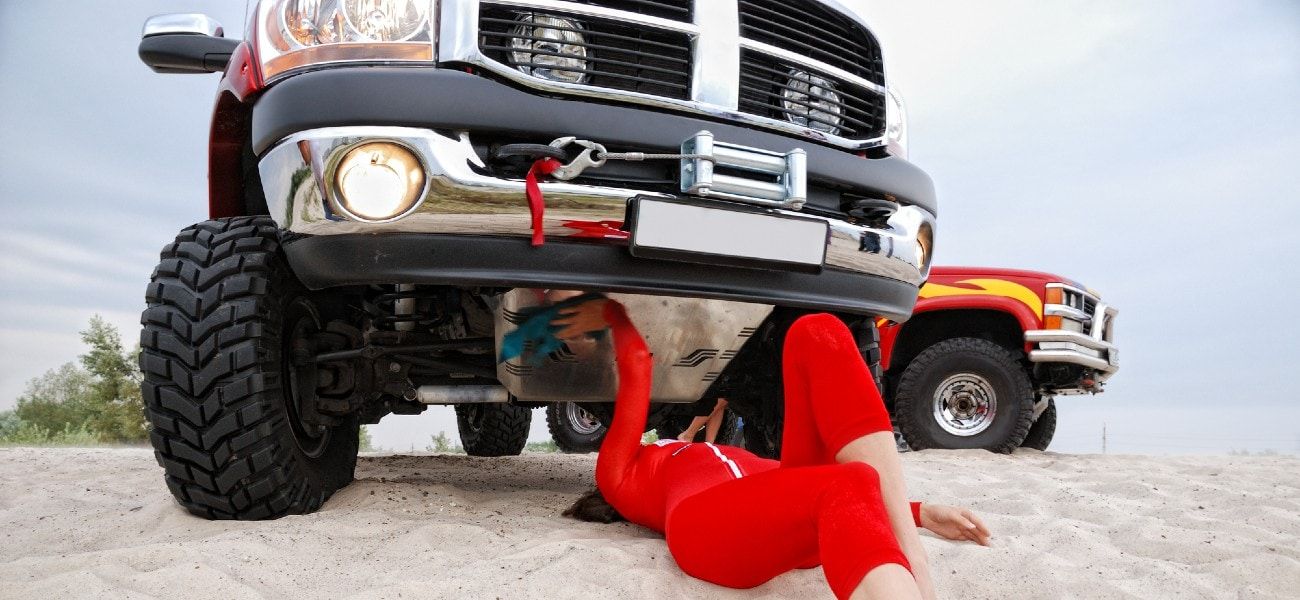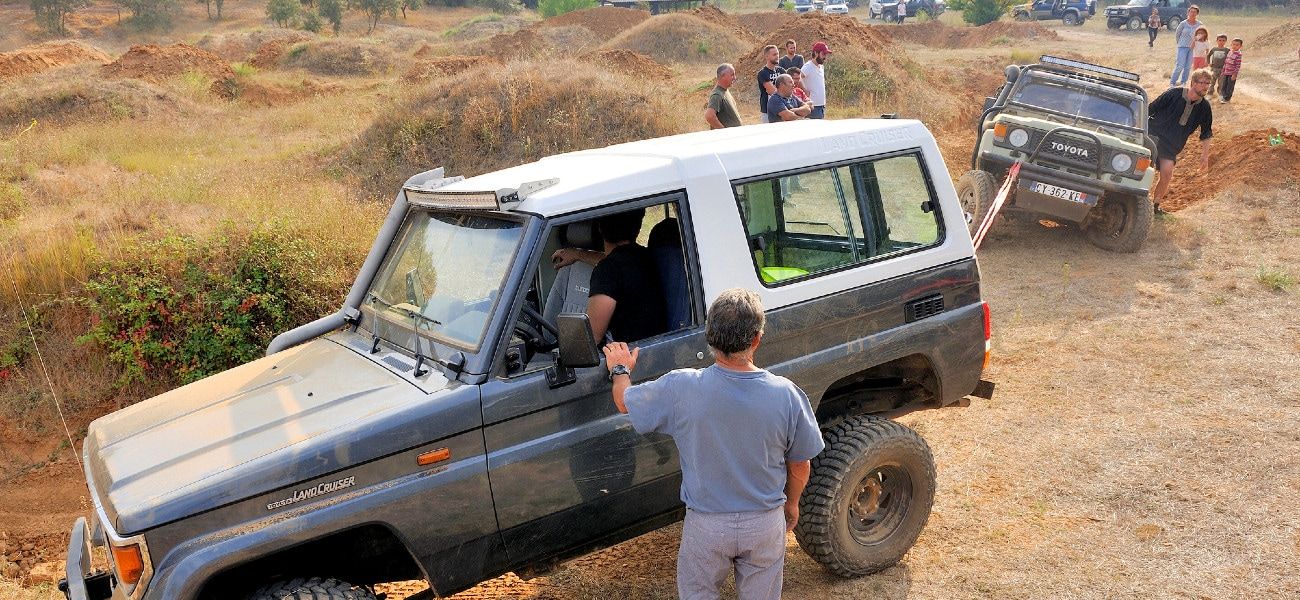Nothing beats a day out with your 4WD.
However, after crashing through dunes or wading through waterways there’s an important task to do. Your 4X4 may look great in its new coat of mud and dust but this is no good for your vehicle over time.
It’s crucial to clean the 4WD properly with a particular focus on the underbody.
In this guide, we’ll discuss how to clean a 4WD underbody properly. We’ll look at each step and how to deal with different conditions like mud, sand, and water. Let’s get started!
Why is it important to clean your underbody?
Cleaning the underbody of your 4WD is a must to prevent trapped moisture.
This speeds up the oxidization process and promotes rusting. It will shorten the lifespan of key mechanical components. This can prove expensive over time, especially if the rust causes parts to fail.
Saltwater is particularly detrimental for vehicles and should be avoided if possible.
Many serious off-roaders upgrade their 4WDs with extra rust-proofing. Even if you have purchased this feature, it’s still advisable to keep your underbody clean.

Necessary Equipment for Cleaning a 4WD Underbody
Pressure Cleaner:
This tool emits powerful water in a powerful jet. This enables the user to perform a deep clean of their chassis. A pressure spray is a great investment because you can even use it for your car’s bodywork and general cleaning around the house!

Brush and Bucket:
Some crevices are difficult to reach with a pressure cleaner. A brush may be more practical for these tough areas.
It’s also easier to use a brush in conjunction with a cleaning agent. Fill the bucket with water and your cleaning agent.
Cleaning Agents
Multiple cleaning agents may prove useful when washing the vehicle underframe. Not all of these are necessary and some should be used with caution.
Diluted Detergent:
Most people will use a common household detergent or bleach to wash their car. This is safe in small amounts and will help remove stubborn grime.

Snow Foam:
This can help to loosen particles on the undercarriage. It’s not essential but can prove helpful.
Engine Bay Cleaner:
While it’s not intended for the underbody, it’s useful if the vehicle has accumulated an extreme amount of grime.
Polish/Lubricating Oil:
It’s always worthwhile to apply a fresh coat of polish after washing the underbody. This will prevent exposed metal from rusting.
Meanwhile, lubricating oil reduces friction.

How to clean a 4WD underbody?
Now let’s look at the steps to clean a 4WD undercarriage. For a visual guide, check out this video (via Intents).
- Use the pressure washer to thoroughly rinse the 4WD’s underbody. Remove as much of the rough dirt as possible.
- Add a drop of detergent to a bucket of water.
- Carefully wash the undercarriage of the vehicle with the brush and soapy water.
- Leave the soap to sit for about 20 minutes.
- Take your pressure spray and rinse it off.
- Leave the vehicle to dry. This may take a full night depending on the conditions.
- Apply a coat of polish to exposed metal surfaces. Also, lubricate everything that requires it!
Differences Between Saltwater/Muddy Conditions
Muddy environments and beaches require different cleaning approaches. Read on to discover the best ways to deal with these types of terrain.
Saltwater/Beaches
Sand is a pain to deal with so avoid opening more than one door at a time on the beach. Don’t attempt to clean the undercarriage of your 4WD while you’re still on the sand because the water could cause the vehicle to sink.
One useful tool to help remove sand from the vehicle’s undercarriage is an oscillating sprinkler. You can set it up so that it will oscillate and clean from all directions. Sand can come off easier than caked on mud so this can save a lot of work.
Put it under the car in a few different locations and set it to oscillate at a wide angle to clean the undercarriage.
While we’re primarily focused on the 4X4’s underbody, it’s also important to wash the engine bay too. There will be sand inside so wash it out with a hose before applying a lubricant.

Muddy Water
The presence of mud brings its challenges.
Red Australian mud can be corrosive and will eat through the plastic over time. That’s why it’s important to clean it off when you’re finished off-roading. However, it can sometimes withstand a pressure hose, even at point-blank range.
That’s why the use of an all-purpose cleaning agent is important. Follow the steps outlined earlier and you should be fine.

Additional Points To Consider
Protective Wear
Some people like to use a spray bottle to apply cleaning agents to the vehicle’s undercarriage. This is perfectly viable.
However, if you’re crawling under your car and spraying upward, there’s a risk of chemicals going into your eyes.
Always wear eye protection or gloves when dealing with potentially toxic products.
Take Care Around Sensitive Areas
4WD vehicles may look tough but they have as many sensitive areas as regular cars.
Take care when you’re washing around sensitive areas because you could cause expensive damage. That’s especially true when using a pressure sprayer because of its power.
Use a brush for the areas that require a delicate touch.
Don’t Take Shortcuts
Most people just want to get the job over and done with as quickly as possible.
However, it’s important to do it properly. That means taking your time and ensuring that all of the dirt is removed from the undercarriage of the vehicle. Otherwise, you’re wasting your time and your 4X4 will suffer the consequences.
This includes allowing it to dry properly after the initial rinse. Don’t apply polish or lubricants while it’s still wet.
Final Thoughts
Cleaning the underbody of a 4X4 isn’t anybody’s idea of a good time. But it’s an important task that can save hundreds of dollars worth of damage.
Remember to follow the appropriate steps to deal with whatever terrain you’ve encountered. Wet sand requires a different approach from mud. Also, don’t rush because it won’t end well.
If you’ve any questions about how to clean a 4WD underbody, please comment below.
This article may contain affiliate links. I will earn a commission if you choose to purchase a product or service after clicking on my link. This helps pay for the cost of running the website. You will not be disadvantaged in any way by using my links.
Note that while every effort is made to ensure the accuracy of the information on this page, there may sometimes be errors. Check all specifications with the manufacturer before purchasing any product.



